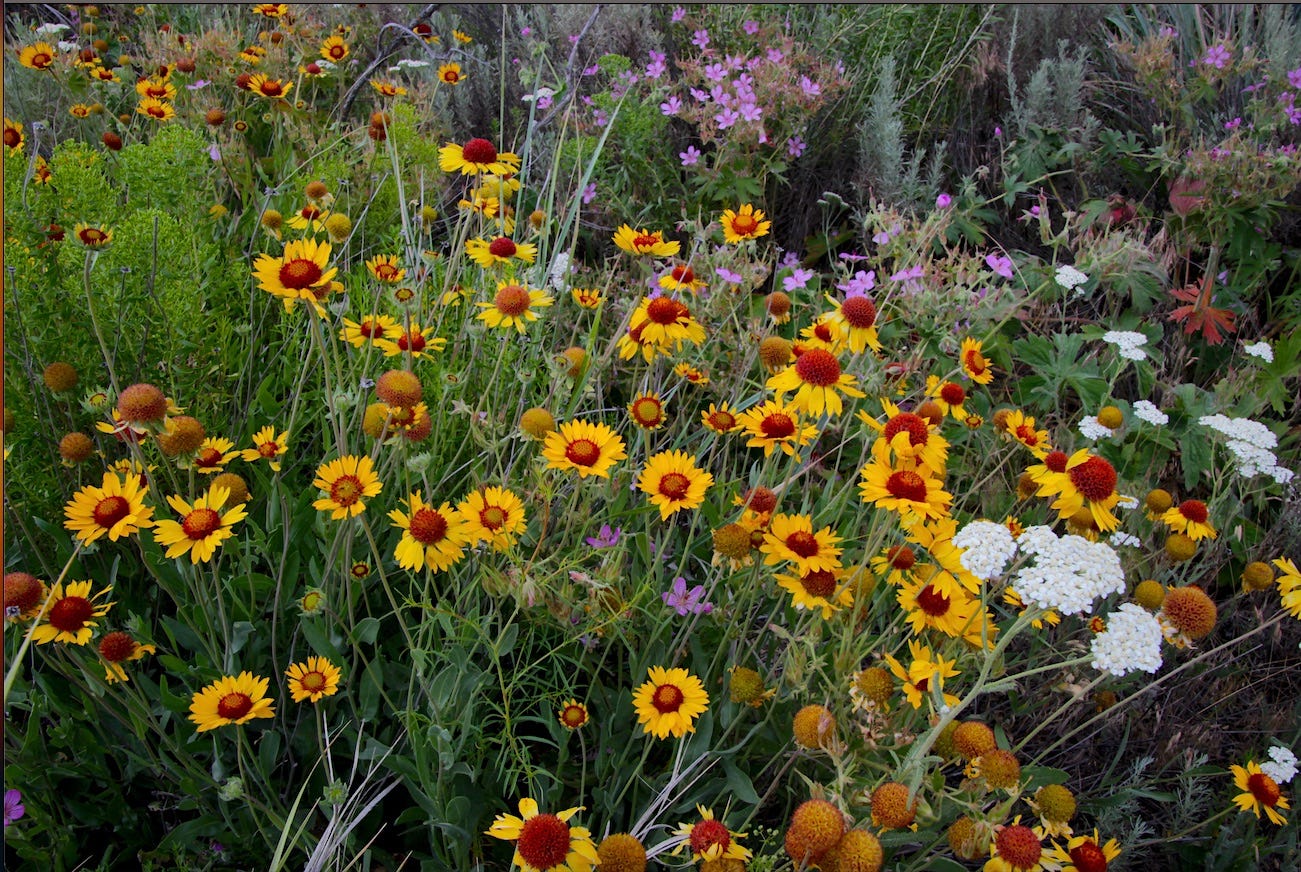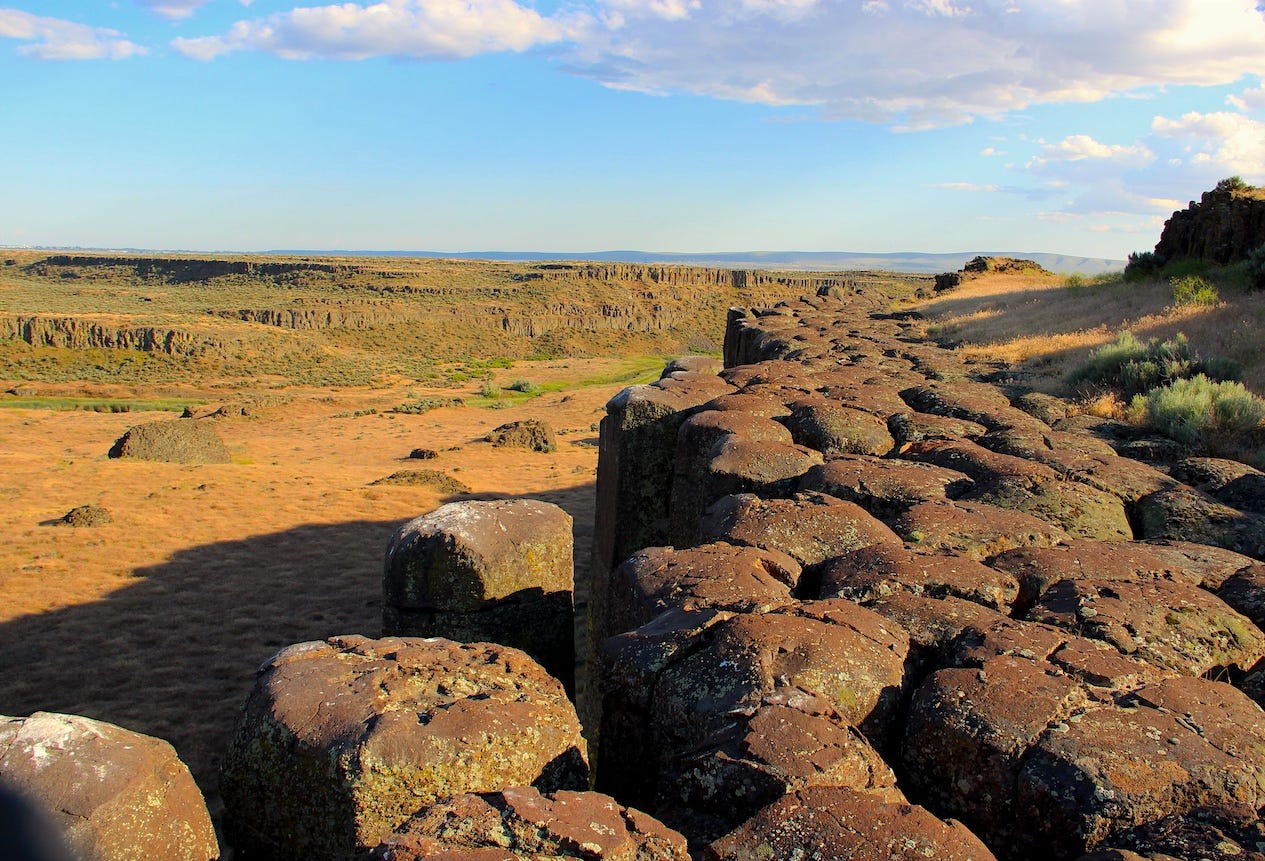Blanket flower, yarrow, sticky geranium and sage at the Sprague Lake Natural Area
The Drumheller Channels north of Othello rank among the region’s most spectacular natural wonders. But they’re also among the least visited.
Splayed on regional maps, the lower Columbia Basin’s channeled scablands resemble an enormous jellyfish. At least that’s how it all looks to me, with present-day Spokane at its head in the northeast and tentacles of flood-scoured pathways generally drifting to the southwest.
The famed scabland geologist J Harlen Bretz took note of the pattern—“like roads to Rome,” he wrote in 1959, the braided and gaping channels created by Ice Age floods ultimately led to the Pasco Basin and Wallula Gap.
Some of the floodwaters took a more circuitous route than others.
For example, Telford tract floodwaters that carved Lake Creek Coulee in central Lincoln County were headed toward Pasco until they reached the Crab Creek valley near present-day Odessa. Confronted by highlands to the south, the riot of rocks, water and ice made a sharp right turn and followed the Crab Creek drainage to the west. It was only when the rampaging floods reached the Quincy Basin—north of present-day Moses Lake—that the swirling chaos turned southward.
Full article available via subscription to The Daily Rhubarb






